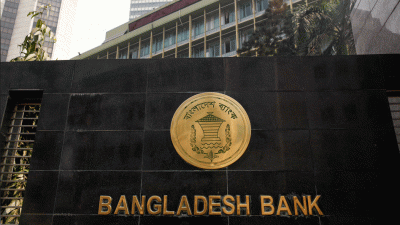 With the US resuming economic sanctions against Iran, there is mounting concern in Tehran over the fate of joint projects and agreements worked out in recent years with Bangladesh and India.
With the US resuming economic sanctions against Iran, there is mounting concern in Tehran over the fate of joint projects and agreements worked out in recent years with Bangladesh and India.
Iran faces an uphill task considering the massive relief it secured from the US and EU countries in 2016 when the sanctions were lifted. This followed in the wake of progress made in dialogue between Iran and the international community over the nuclear deal(JCPOA) that was worked out, to stop Iran from weaponising its nuclear development programme.
One estimate at the time indicated that after the lifting of sanctions , Iran could immediately access blocked funds over $100 billion, as the deadlock in project implementation , collaborations and economic transactions finally ended. Thanks to the US, the relief Iran experienced was all too brief to matter!
In terms of volume the magnitude of Bangladesh-Iran bilateral trade or the India-Iran trade is not significant.
But this does not mean that its financial dealings with the two large , emerging South Asian economies, both reporting a steady annual economic growth rate between 6 and 8% , is not important to Tehran. Iran enjoys a hefty balance of trade advantage vis-à-vis both Bangladesh and India. Maintaining a positive trade balance with as many countries in the world as possible is top priority for Iran in the medium term.
At present bilateral trade between India and Iran stands at nearly $13 billion. Iran exports items(mainly oil) worth nearly $9 billion to India, while India exports around a third of the amount, leaving Teheran with a healthy surplus. Indian exports are mostly restricted to agricultural items ---- in value terms, Basmati rice accounts for nearly 30% of its export earnings from Iran.
Therefore, a surplus of $6 billion annually in bilateral trade is certainly a major help to any economy, including Iran’s , especially because it was strapped for cash until recently. In case US sanctions also target strongly Indian parties and investors participating in bilateral ventures now, the going will get grim for Iran.
The bilateral Bangladesh-Iran trade is much smaller . Here too, the balance is overwhelmingly in favour of Iran . If Western sanctions make things difficult for Bangladesh to involve itself more deeply with Iran, the latter would suffer more.
Between 2005 and 2013, Bangladesh managed to increase its exports from $38.9 million to $75 million. Its imports were worth much more. Now that Bangladesh’s economy has grown stronger with an annual GDP of around $250 billion, with a rising annual growth rate, Iran would have found it easier to export more items in the normal circumstances. The two countries also have a free trade agreement .
Iran has helped Bangladesh develop its energy sector in recent years, helping with build the Eastern refinery. It was considering specially favourable rates for Bangladesh for its prized light crude. It is keen to buy both jute and jute goods in larger quantities.
India has chosen to react cautiously to the reimposition of US sanctions, by taking up the matter at a diplomatic level. Foreign office spokesmen have tokd the media they are ‘monitoring further developments’. There is concern over the prospects of the trilateral Chabahar port project where Iran partners Afghanistan and India. If progress is stalled in this project, China and Pakistan would get a major boost in their ongoing joint CPEC project which ironically will not please the US!
During Prime Minister Narendra Modi’s last visit to Iran, 12 trade and business agreements were signed. When Iranian President Hassan Rouhani last visited India recently, the two countries finalised 9 more agreements which included specific projects. Free of sanctions in 2016, India bought more oil from Iran, making it its third largest supplier.
To evade the sanction-imposed restrictions, Iran and India may resort to their old proposal to replace the US dollar as a medium of exchange and do much of their oil and other trade using the rupee and the rial. There is also a provision for using wheat , rice and medicines etc as items fir exchange.
Similarly, with strong support against the US sanctions from Germany, France and the UK and Russia, Iran may use the yuro instead of the dollar in their dealings. This jells very well with the more ambitious and long term plan of China and Russia and by extension , of the BRICS and SCO member countries, to marginalize and weaken the US dollar by using their own currencies like yuan, ruble and rupee more widely .
However that is another major story in its own right. For now suffice it to say that increasingly the US/EU are learning the hard way that economic sanctions used mindlessly or too often harm the economies of the sponsoring nations in the long term and the progress of the world economic order generally. Both Russia and Iran may be economically in a hard place because of the western sanctions, but both have plenty of options in the long run .
Above all, the fact that major fissures are finally appearing in the almighty US/EU Western military alliance is the biggest positive takeaway for the emerging Asian economies led by China , post US sanctions. It strengthens hopes that peace may yet come to prevail, especially in conflict- riddled Asia and Africa.
Related Story
Pompeo threatens Iran with the “strongest sanctions in history”
'Iran sanctions will not hurt Bangladesh'






